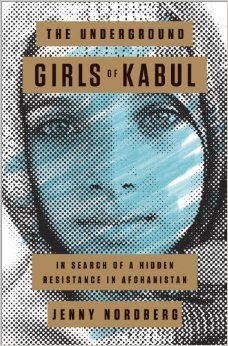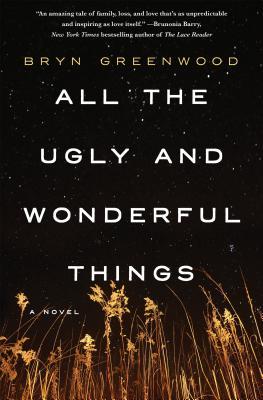An investigative journalist uncovers a hidden custom that will transform your understanding of what it means to grow up as a girl
In Afghanistan, a culture ruled almost entirely by men, the birth of a son is cause for celebration and the arrival of a daughter is often mourned as misfortune. A bacha posh (literally translated from Dari as “dressed up like a boy”) is a third kind of child – a girl temporarily raised as a boy and presented as such to the outside world. Jenny Nordberg, the reporter who broke the story of this phenomenon for the New York Times, constructs a powerful and moving account of those secretly living on the other side of a deeply segregated society where women have almost no rights and little freedom.
The Underground Girls of Kabul is anchored by vivid characters who bring this remarkable story to life: Azita, a female parliamentarian who sees no other choice but to turn her fourth daughter Mehran into a boy; Zahra, the tomboy teenager who struggles with puberty and refuses her parents’ attempts to turn her back into a girl; Shukria, now a married mother of three after living for twenty years as a man; and Nader, who prays with Shahed, the undercover female police officer, as they both remain in male disguise as adults.
At the heart of this emotional narrative is a new perspective on the extreme sacrifices of Afghan women and girls against the violent backdrop of America’s longest war. Divided into four parts, the book follows those born as the unwanted sex in Afghanistan, but who live as the socially favored gender through childhood and puberty, only to later be forced into marriage and childbirth. The Underground Girls of Kabul charts their dramatic life cycles, while examining our own history and the parallels to subversive actions of people who live under oppression everywhere.
Hardcover, 368 pages
Published September 16th 2014 by Crown (first published January 1st 2014)
ISBN 0307952495 (ISBN13: 9780307952493)
About the Author
Author Jenny Nordberg began to hear hints of something hidden in Afghanistan. Hidden within a culture that values men over women, and the birth of a baby boy is something to celebrate while the birth of a baby girl can lead to shame and public ridicule, there is a hidden tradition carried out by some families, whereby young girls are raised as boys. These girls are referred to as bacha posh.
Having at least one son is mandatory for good standing and reputation here…
A baby boy is triumph, success. A baby girl is humiliation, failure. He is a bacha, the word for a child. A boy. She is the “other”: a dokhtar. A daughter.
She says of a little girl baby only a few hours old: “...she is naqis-ul-aql, or ‘stupid by birth,’ as a woman equals a creature lacking wisdom due to her weak brain.There are different motivations for having a daughter live as a bacha posh. Some do it in order to improve their reputation and standing after having only daughters, while others do it for the convenience of having a "son" to assist with things like running errands and escorting the other daughters in the family (in a society that forbids women and young girls to go out unsupervised without a male present). And yet others do it for the benefit of the girl, in order to allow her to have the experience and confidence that comes with living as a boy. They are entitled to sit with their father and his friends, to work, to play in the street. There are special benefits allowed young boys that girl's are not permitted.
That life can include flying a kite, running as fast as you can, laughing hysterically, jumping up and down because it feels good, climbing trees and feeling the thrill of hanging on. It is to speak to another boy, to sit with your father and his friends, to ride in the front seat of a car and watch people out on the street. To look them in the eye. To speak up without fear and to be listened to, and rarely have anyone question why you are out on your own in comfortable clothes that allow for any kind of movement. All unthinkable for a girl.There have been attempts in the past to change the culture surrounding the subjugation of women. The royal couple Amanollah Khan and his queen Soraya in the '20s fought for women's rights, pushing for their education and banning their sale into marriage. However amid a backlash and the threat of a coup, Amanollah Khan had to abdicate in 1929.
Here in America we tend to oversimplify this issue. We think Afghanistan simply needs to change their culture of making women second-class citizens who live at the whim of the men in their lives. However we don't understand the complexity of the issue, in a society that views the years before puberty of both men and women as simply "preparation for procreation". Their economy is essentially based heavily on the ability to sell daughters into marriage and to form tribal alliances.
At one point, the author asks people about the differences between men and women. Men give a list of varied responses, such as women are more "sensitive" or more "emotional". But the majority of the women give the same answer...
Here is the answer: Regardless of who they are, whether they are rich or poor, educated or illiterate, Afghan women often describe the difference between men and women in just one word: freedom.Which led me to think: In the West, we focus on things like women being forced to cover their heads. However it is so much simpler than that. The women would happily cover their heads as an expression of their faith, if only they could have freedom: the freedom to choose to leave the house, to travel, to go to school, to choose whether or not to marry and whom to marry, whether or not to have children. This is why every Afghan woman wishes she were a man. Men have freedom; women do not.























